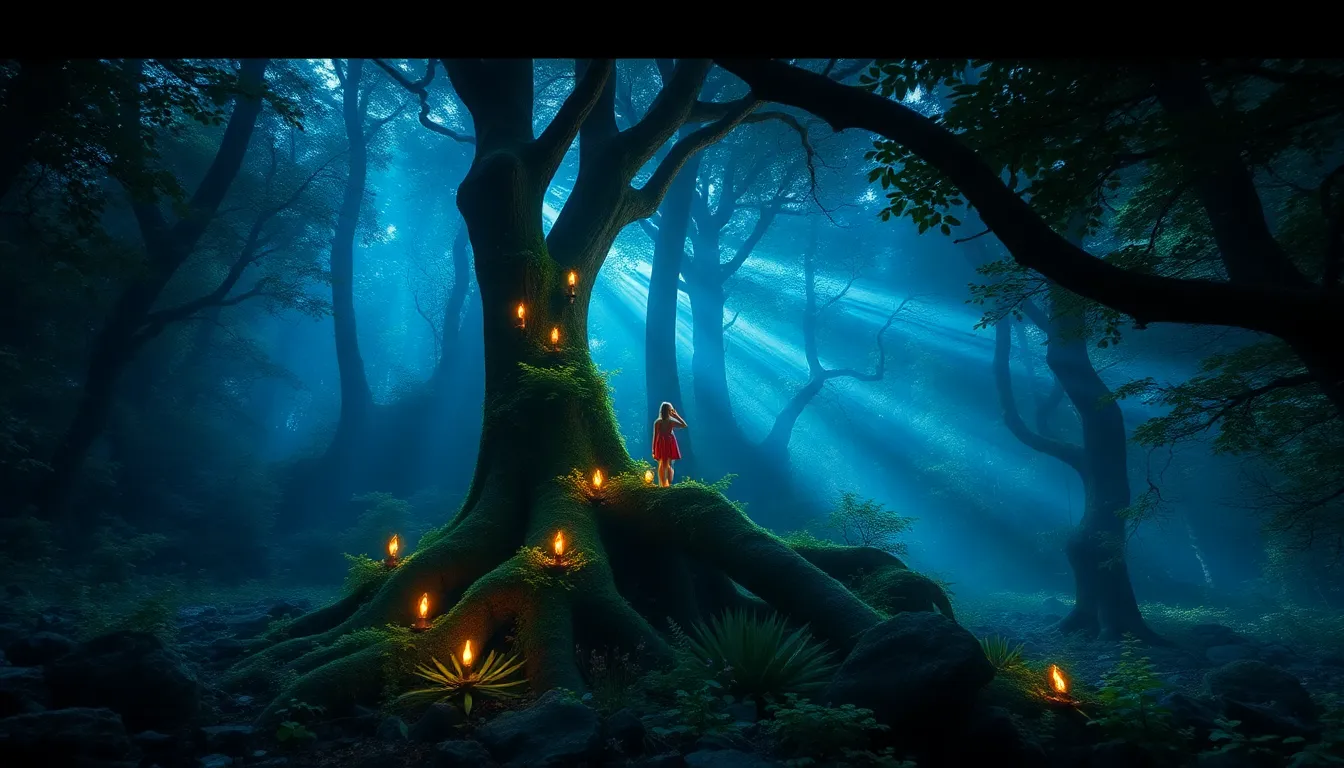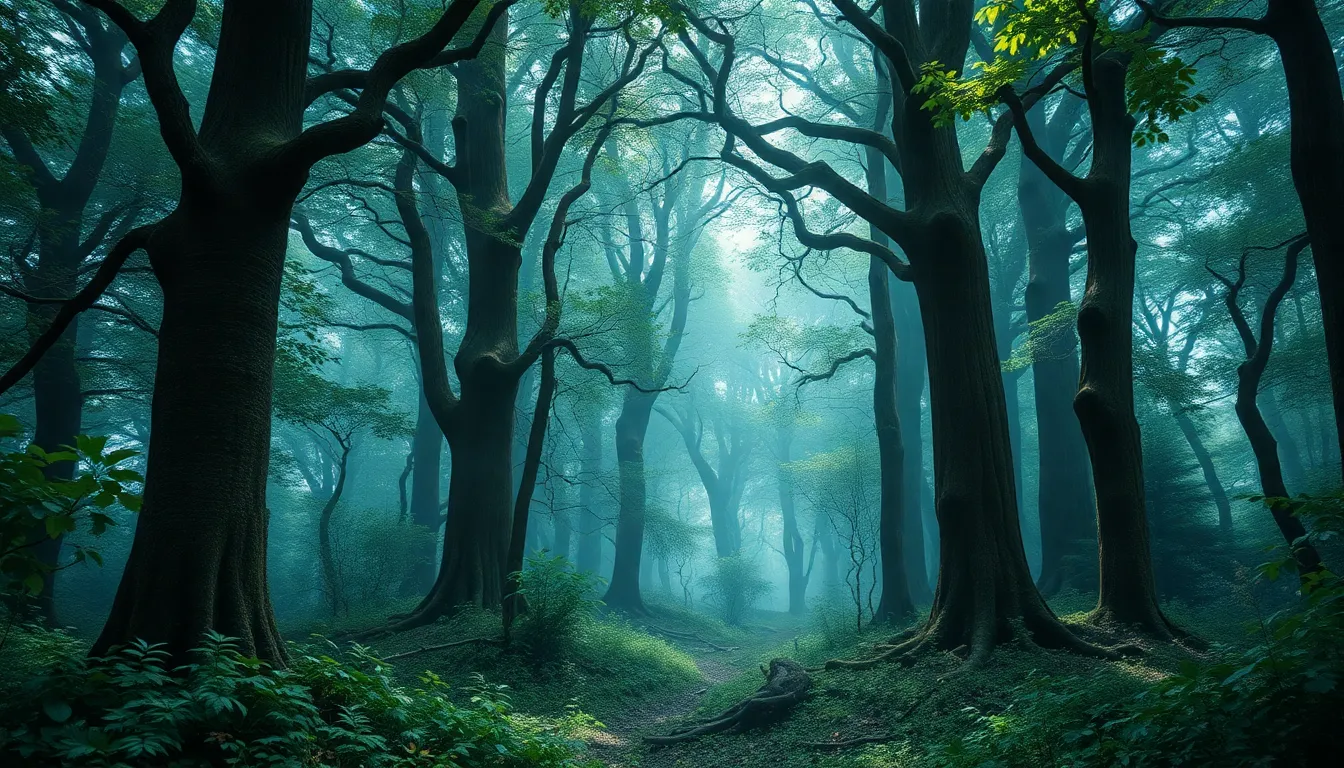Legends of the Enchanted Forest: Tales Passed Down Through Generations
Introduction to the Enchanted Forest
The concept of an enchanted forest has captivated human imagination for centuries. Defined as a mystical woodland filled with magical beings and phenomena, these forests serve as a backdrop for countless tales woven into the fabric of folklore. From the shimmering lights of fairies to the whispering trees, enchanted forests symbolize a bridge between reality and the fantastical. They are significant not just in storytelling, but also in their role as custodians of cultural heritage, reflecting the values, fears, and hopes of societies through the ages.
Storytelling has been a vital part of human history, acting as a means of preserving knowledge and traditions. Through the tales of enchanted forests, generations have passed down essential lessons and myths, ensuring that the wisdom of the past remains alive in the hearts of the present.
The Origins of the Enchanted Forest Legends
Historically, ancient cultures viewed forests as sacred spaces, often believing them to be the dwelling places of gods, spirits, and otherworldly creatures. The dense woods were seen as both a source of sustenance and a realm of mystery, where the boundary between the natural and supernatural blurred. In many myths, the forest is a place of transformation and adventure, where heroes embark on quests and encounter various trials.
The role of nature in shaping mythology cannot be overstated. Forests have inspired countless legends, illustrating how the environment influences cultural narratives. For example, in many indigenous cultures, the forest is personified, with trees and animals possessing their own spirits and stories, thus intertwining the natural world with human experience.
Key Characters in Enchanted Forest Tales
Among the most captivating aspects of enchanted forest legends are the characters that inhabit them. These include:
- Fairies: Often depicted as mischievous yet benevolent beings, fairies are synonymous with enchantment and magic.
- Sprites: Small, playful creatures that embody the spirit of nature, bringing joy and wonder to those who encounter them.
- Mythical Beasts: From unicorns to griffins, these creatures often symbolize the untamed aspects of nature.
Another important character is the wise old tree, which serves as a symbol of wisdom, strength, and longevity. These trees often act as guardians of the forest, holding ancient knowledge and guiding lost souls through their trials.
Famous Legends of the Enchanted Forest
Throughout various cultures, numerous legends have emerged from the depths of enchanted forests. Some notable examples include:
- European Folklore: The tale of Little Red Riding Hood showcases the dangers and wonders of the forest, where the line between good and evil is blurred.
- Native American Stories: Legends like that of the Great Spirit emphasize the forest’s importance as a living entity that teaches respect and harmony.
- Asian Myths: In Japan, the Kodama are tree spirits that protect the forest, illustrating the deep-rooted belief in the spiritual essence of nature.
These legends often share common themes, such as the journey of self-discovery, the battle between nature and greed, and the quest for harmony with the environment.
Lessons and Morals Embedded in the Tales
The enchanted forest tales are rife with lessons that reflect the values of the cultures from which they originate. Common morals include:
- The importance of respecting nature and its creatures.
- The value of courage and perseverance in the face of adversity.
- The necessity of balance between humanity and the natural world.
Through these stories, generations have been taught about coexistence with nature, emphasizing that humanity is but a thread in the intricate tapestry of life.
The Evolution of Enchanted Forest Narratives
As societies evolve, so do their narratives. The legends of enchanted forests have transformed over time, adapting to reflect modern values and concerns. In contemporary literature, film, and art, enchanted forests are often portrayed as places of both wonder and danger, reflecting society’s complex relationship with nature.
Media representations have played a significant role in shaping public perception of enchanted forests, often blending traditional elements with modern storytelling techniques. This evolution keeps the legends relevant, resonating with new audiences while preserving their core messages.
Regional Variations of Enchanted Forest Legends
Enchanted forest legends vary significantly across different geographic regions, shaped by local flora, fauna, and cultural practices. For example:
- In Scandinavia: The Hulder is a seductive forest spirit that lures men into the woods, symbolizing the allure and danger of nature.
- In Africa: The Mami Wata legend features a water spirit that embodies the forest and river connections, teaching respect for water as life-giving.
- In the Amazon: Indigenous tales of the Yacuruna highlight the interconnectedness of water and forest ecosystems, emphasizing sustainability and respect.
These regional variations enrich the tapestry of enchanted forest stories, showcasing the diversity of human experience and belief.
The Role of Oral Tradition in Preserving Legends
Oral tradition has been the cornerstone of preserving enchanted forest legends. Storytelling sessions around the fire or in community gatherings have allowed these tales to thrive through generations. The art of storytelling is not just about the narrative; it is about the performance, the emotion, and the connection between the storyteller and the audience.
However, the advent of technology and media has altered the landscape of storytelling. While it has made legends more accessible, it poses a risk of diluting their authenticity. Balancing modern media with traditional practices is essential to keep these stories alive and relevant.
The Enchanted Forest in Contemporary Culture
In contemporary culture, enchanted forest legends continue to inspire a myriad of entertainment forms, from movies like Pan’s Labyrinth to video games such as The Legend of Zelda. These adaptations showcase the timelessness of these tales, allowing new generations to engage with age-old themes.
Moreover, there is a resurgence of interest in folklore and nature conservation, as people seek to reconnect with the natural world. This interest reflects a growing awareness of environmental issues and a desire to preserve the beauty and mystery of our forests.
Conclusion: The Enduring Magic of Enchanted Forest Legends
The legends of enchanted forests are timeless narratives that resonate across cultures and generations. They remind us of our connection to nature, the importance of preserving our environment, and the power of storytelling in shaping our understanding of the world.
As we navigate the complexities of modern life, let us encourage one another to explore and share our own local legends, ensuring that the magic of the enchanted forest continues to inspire and educate future generations.



